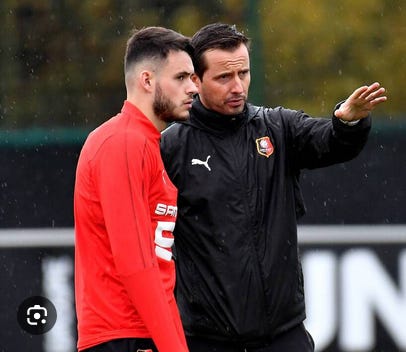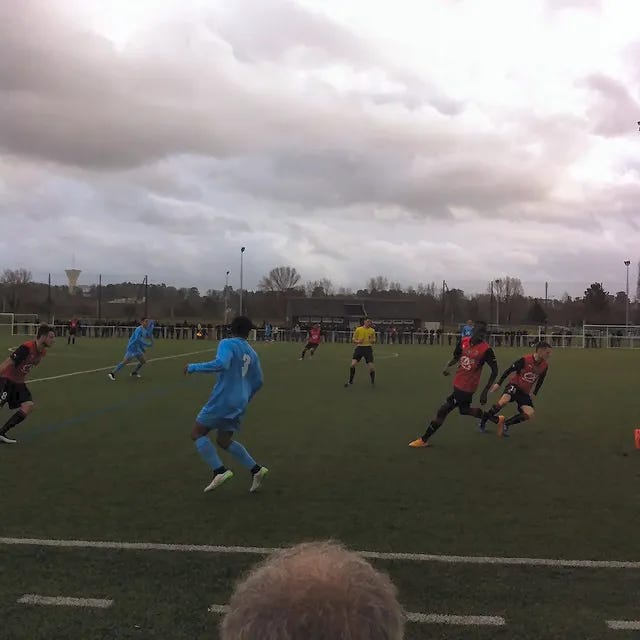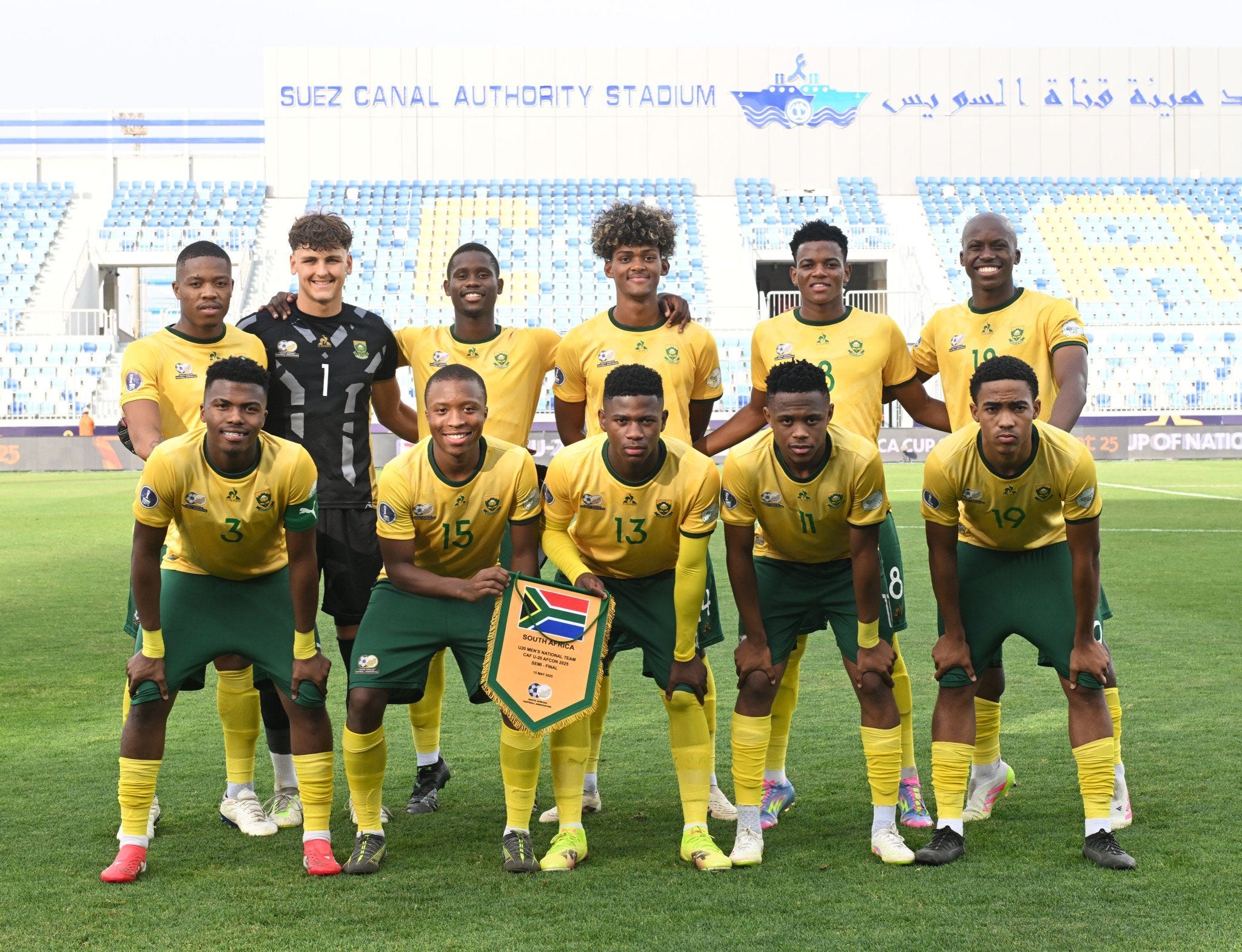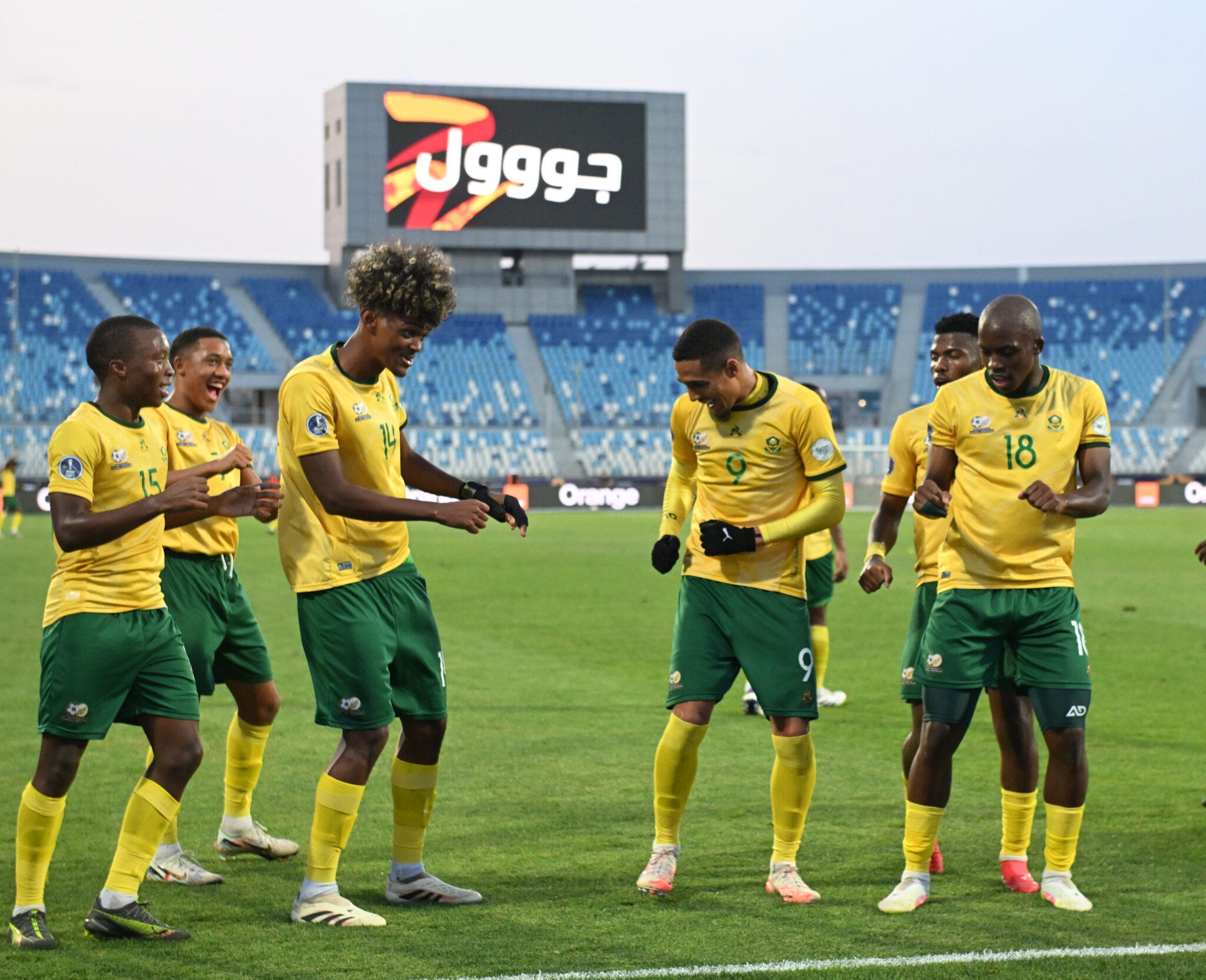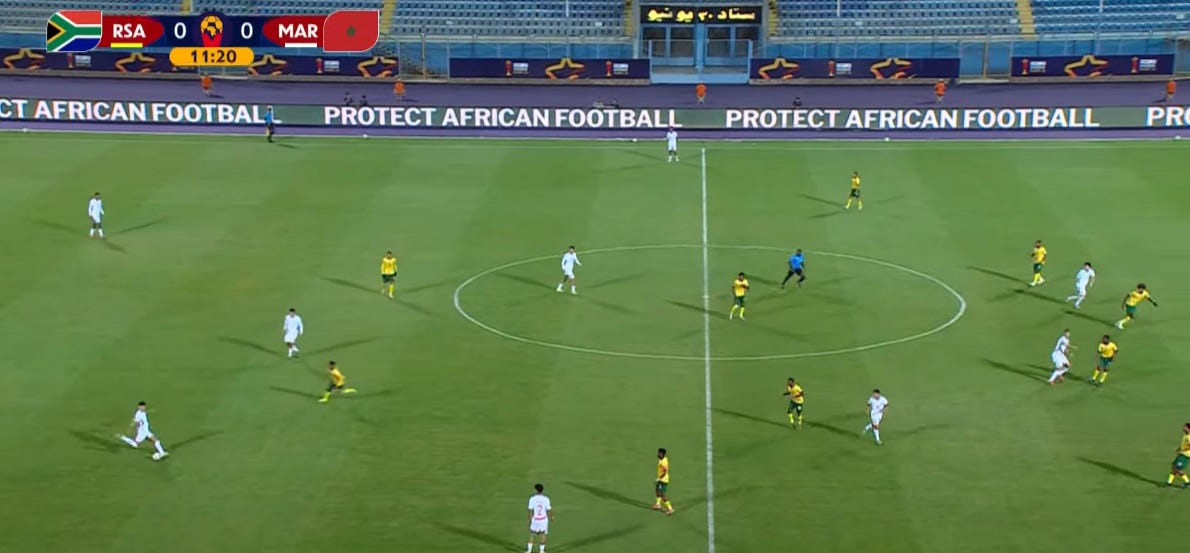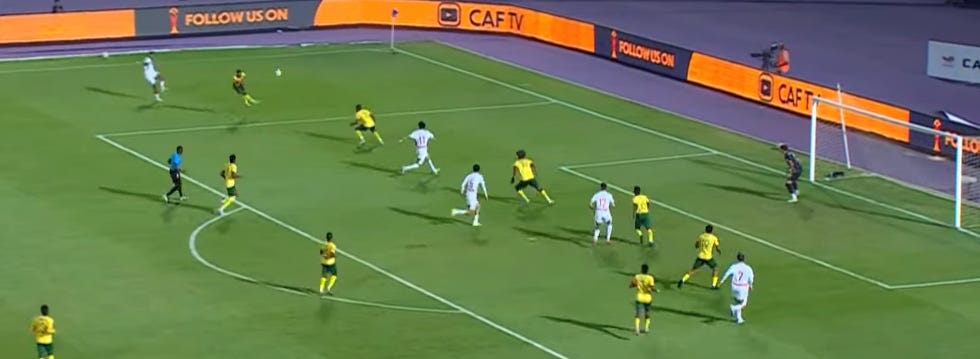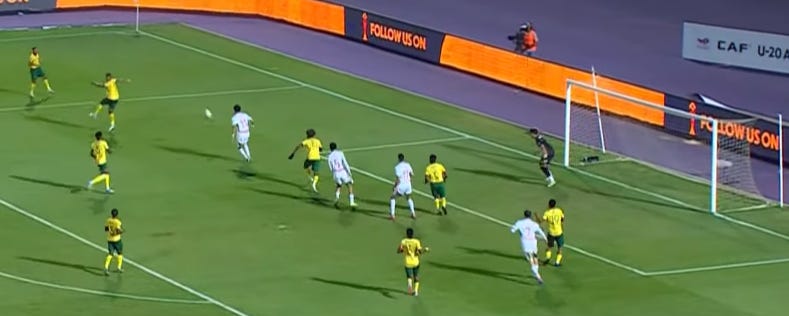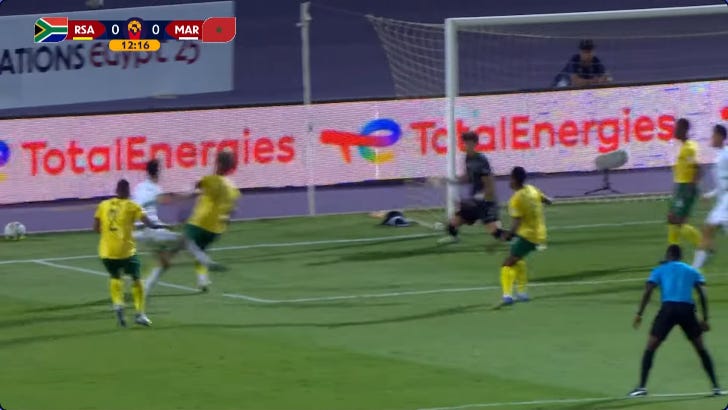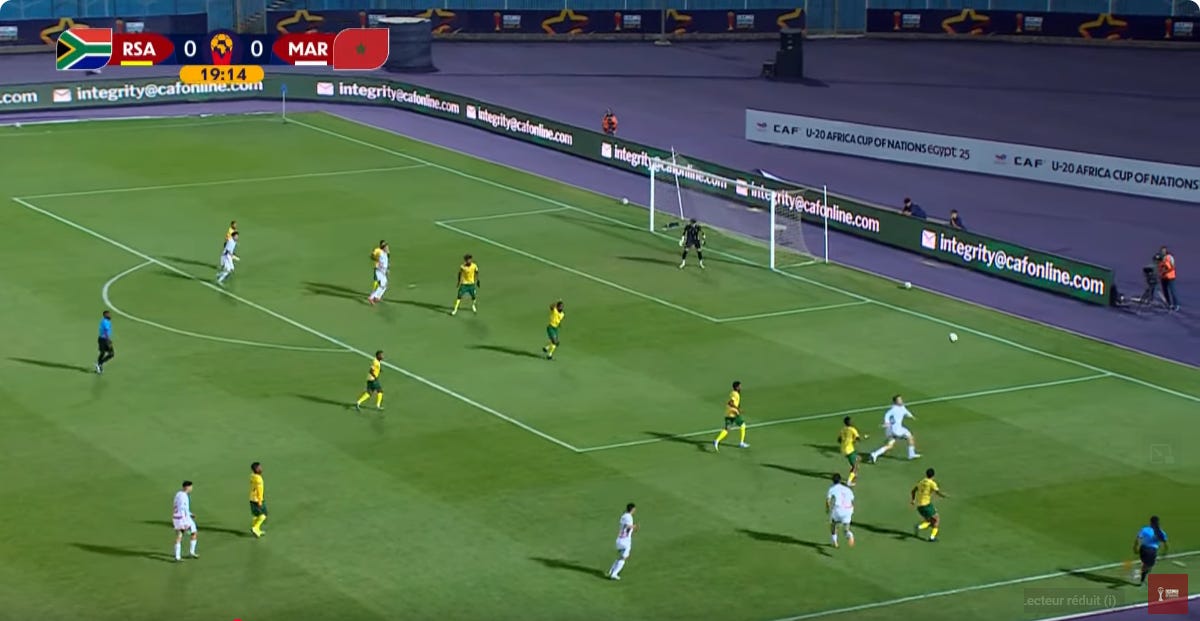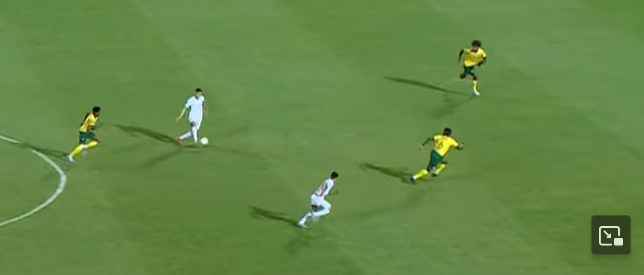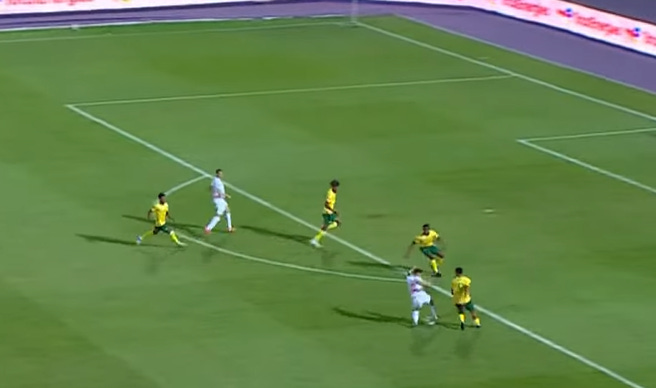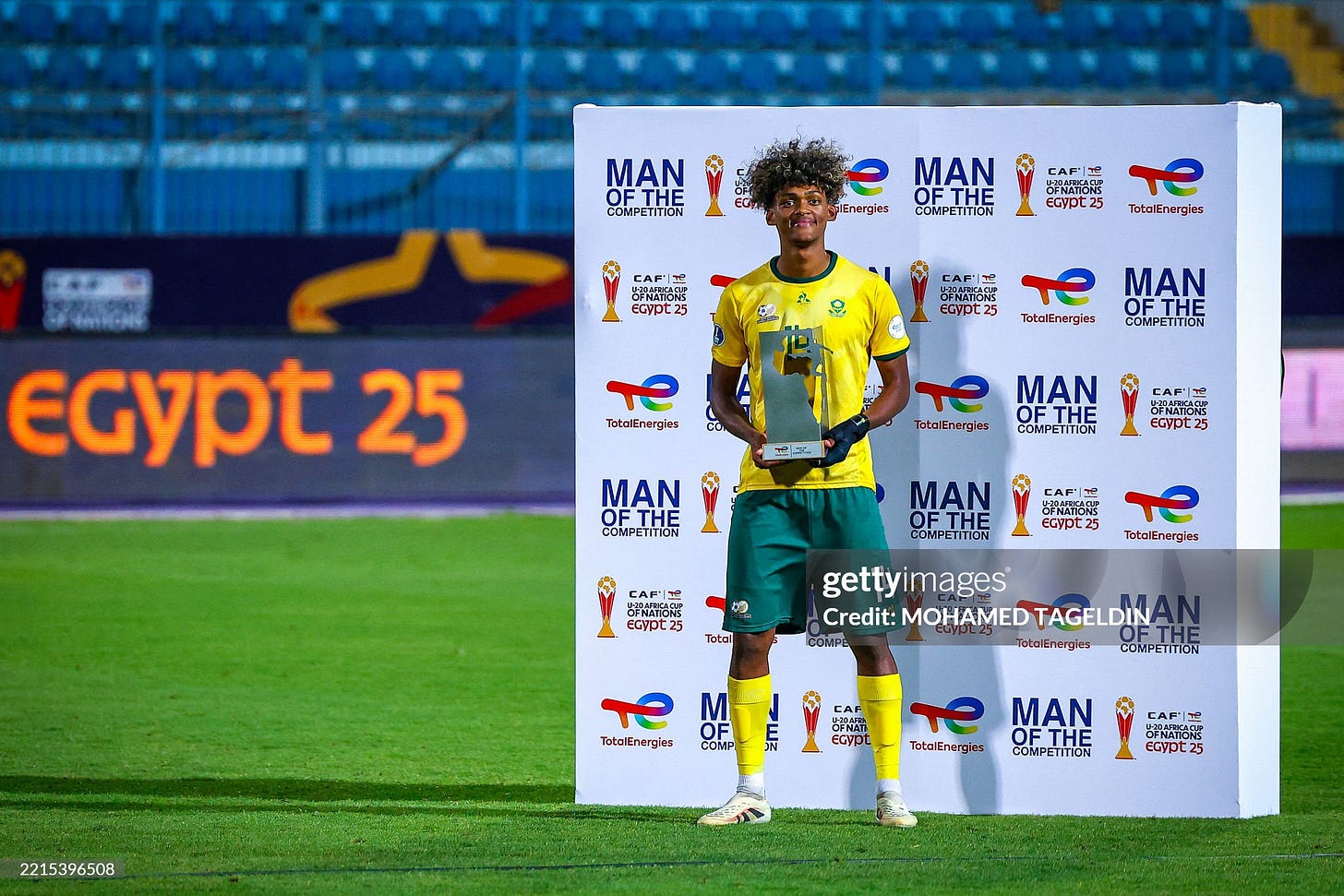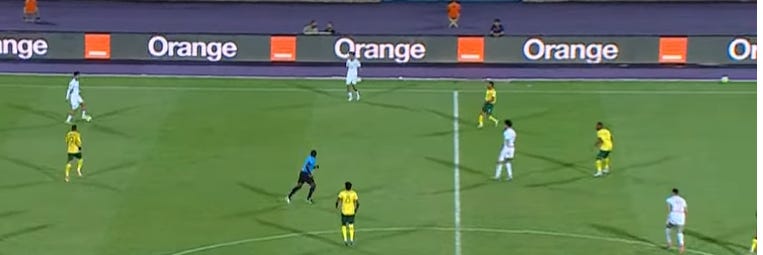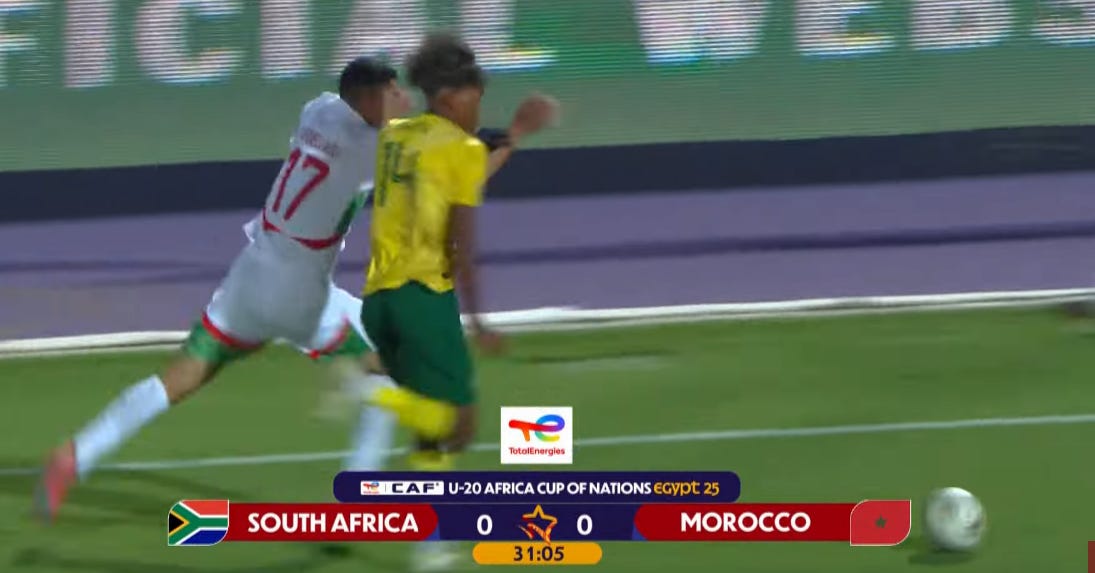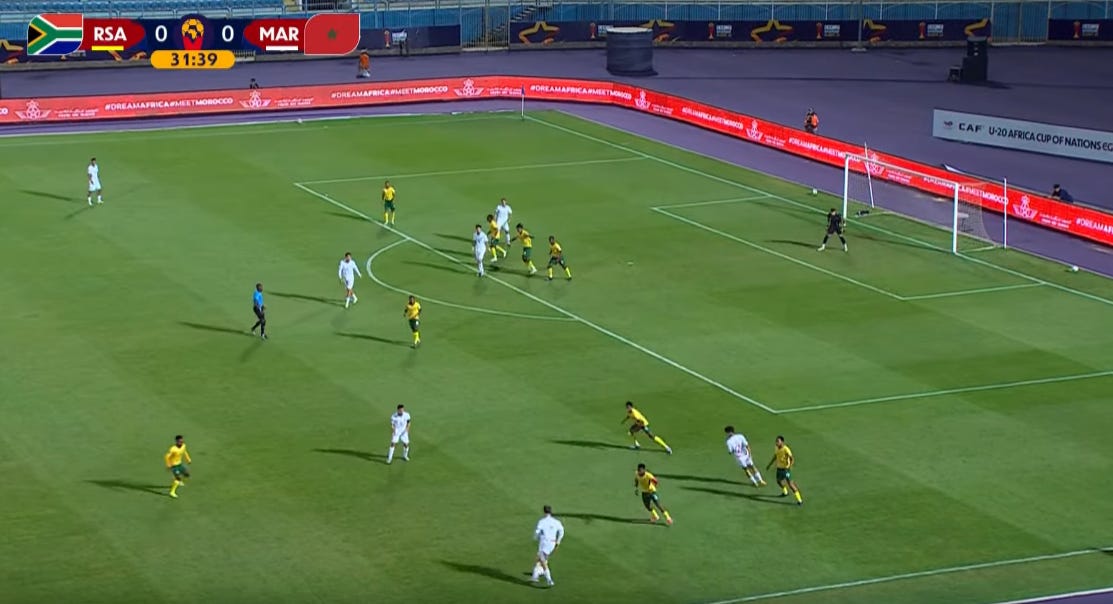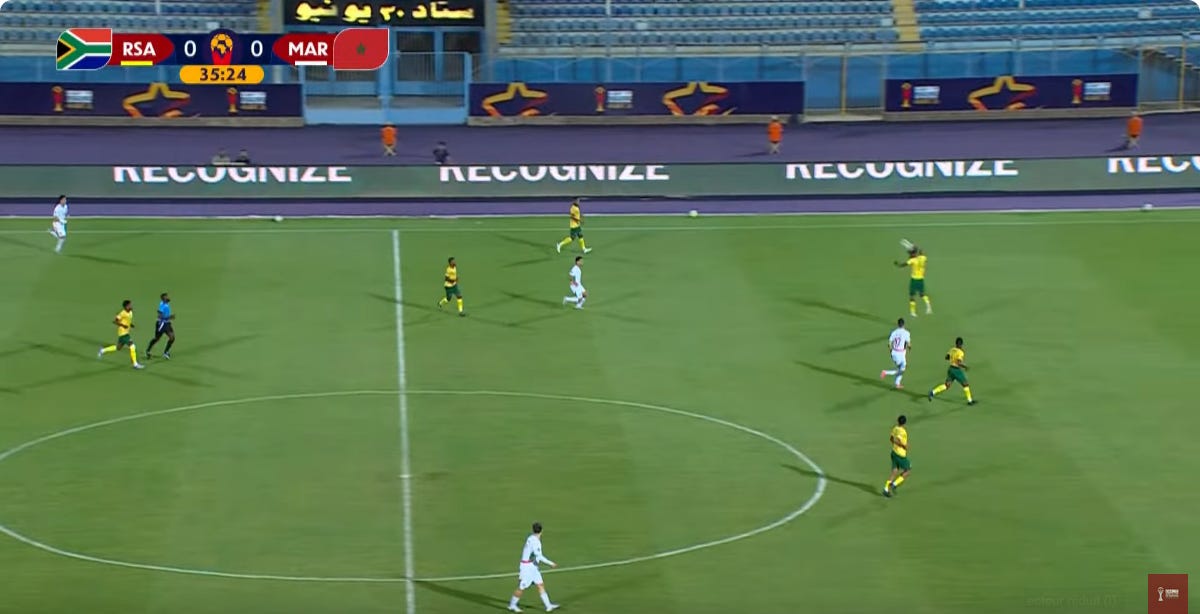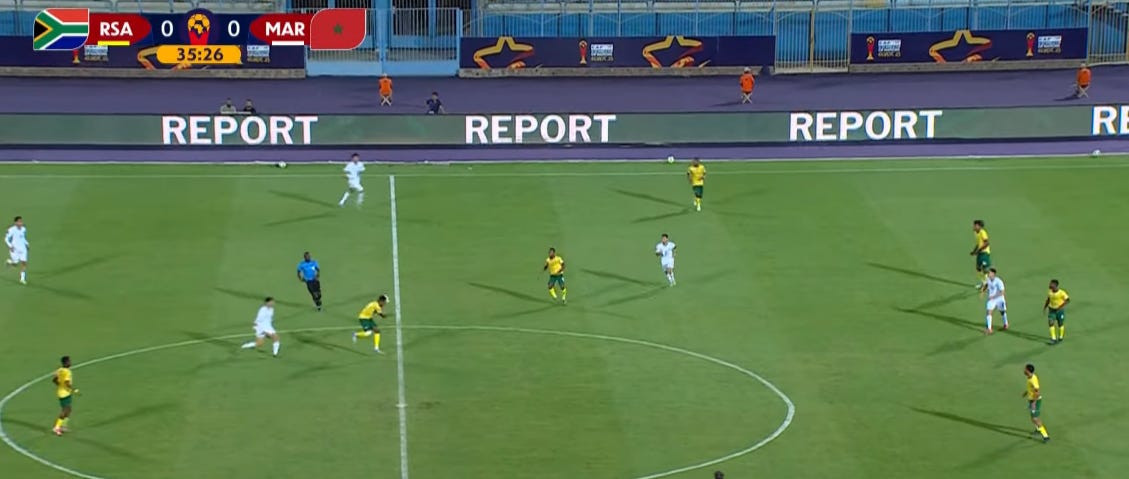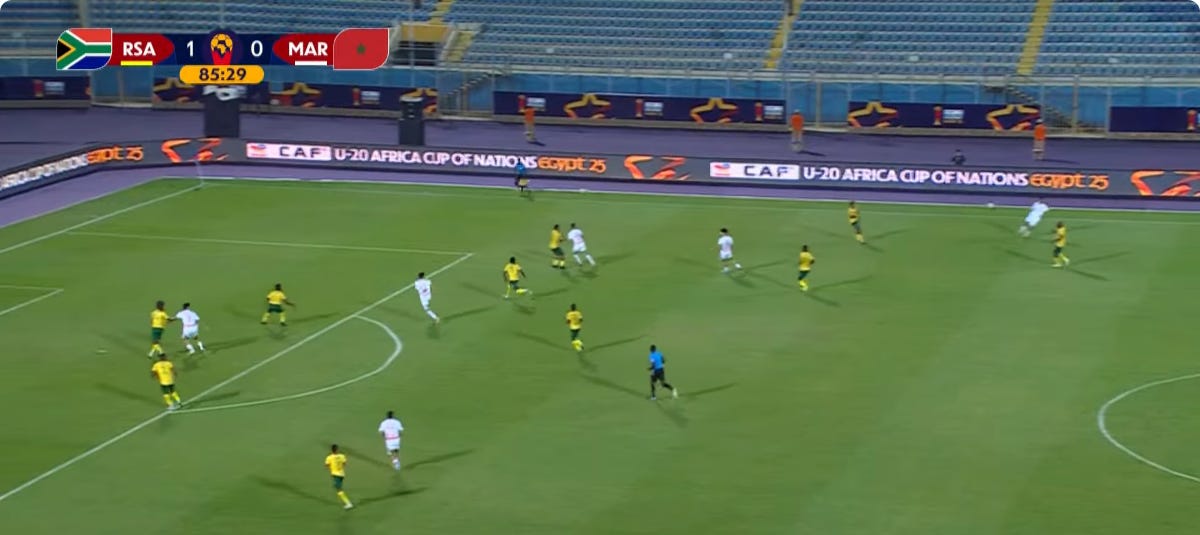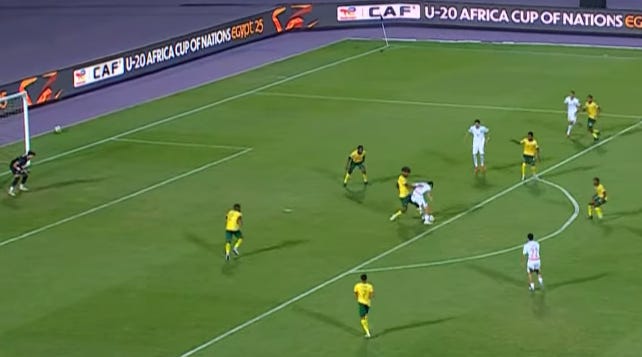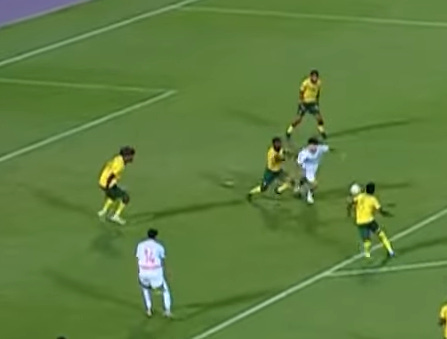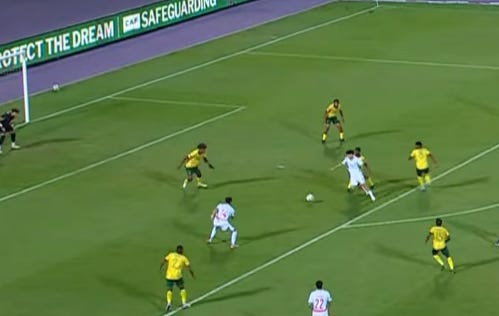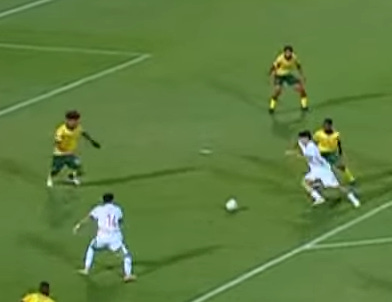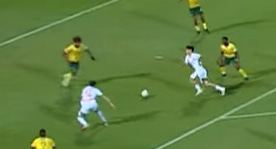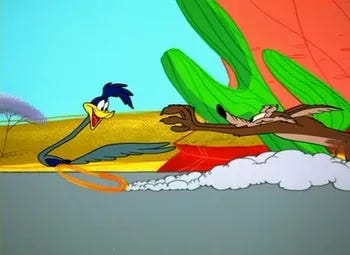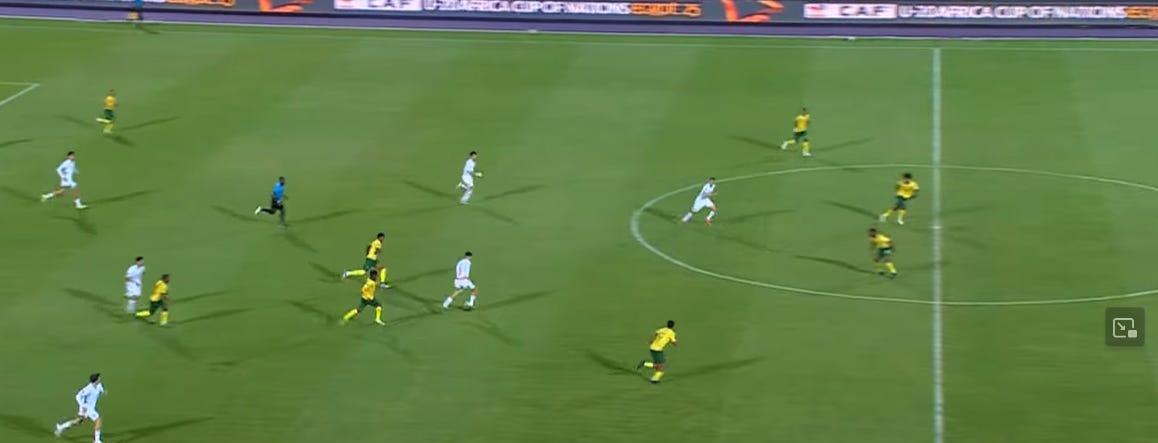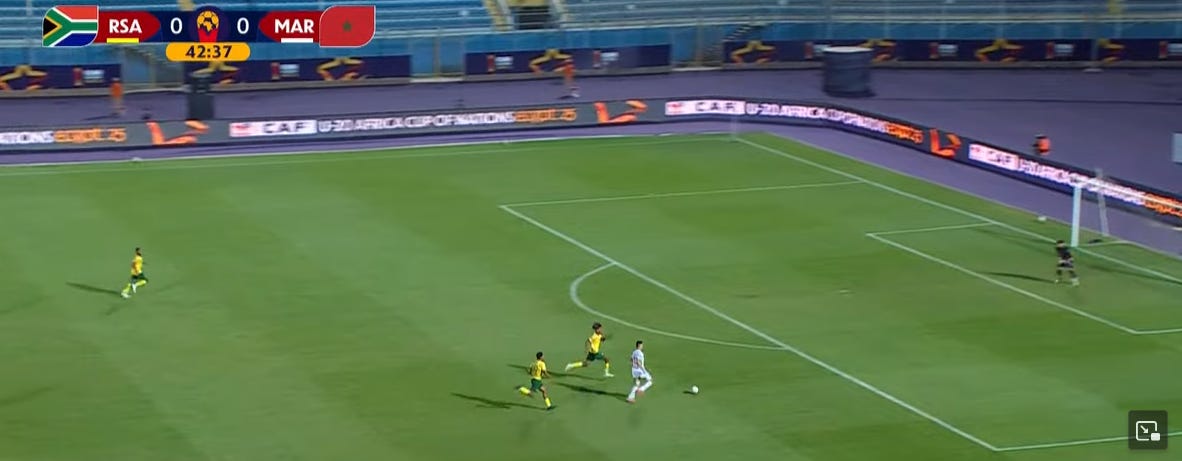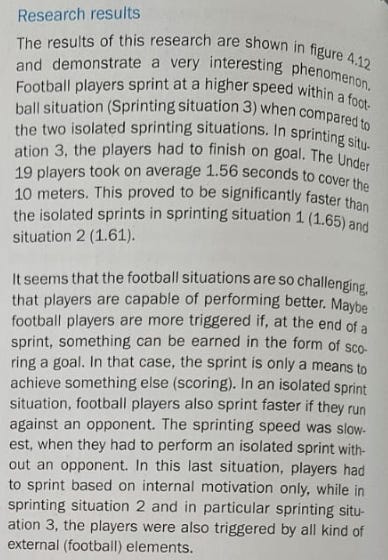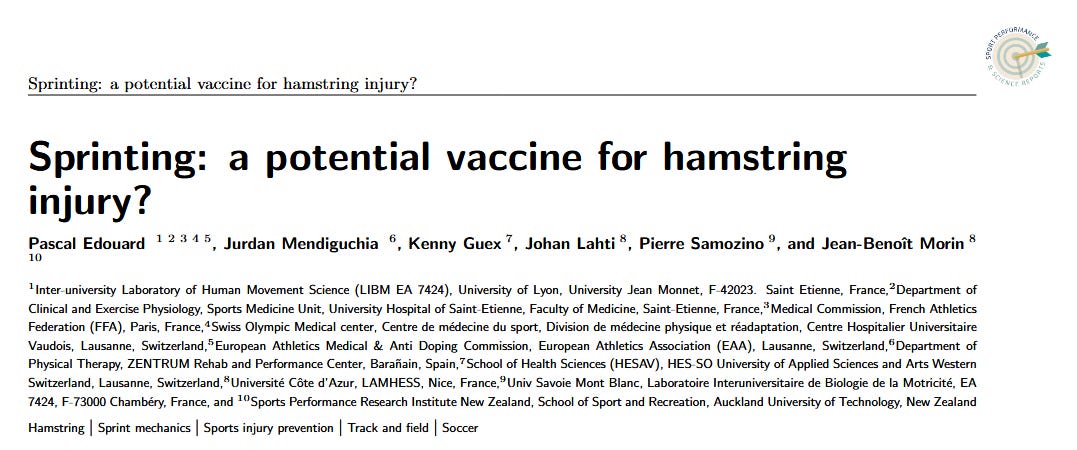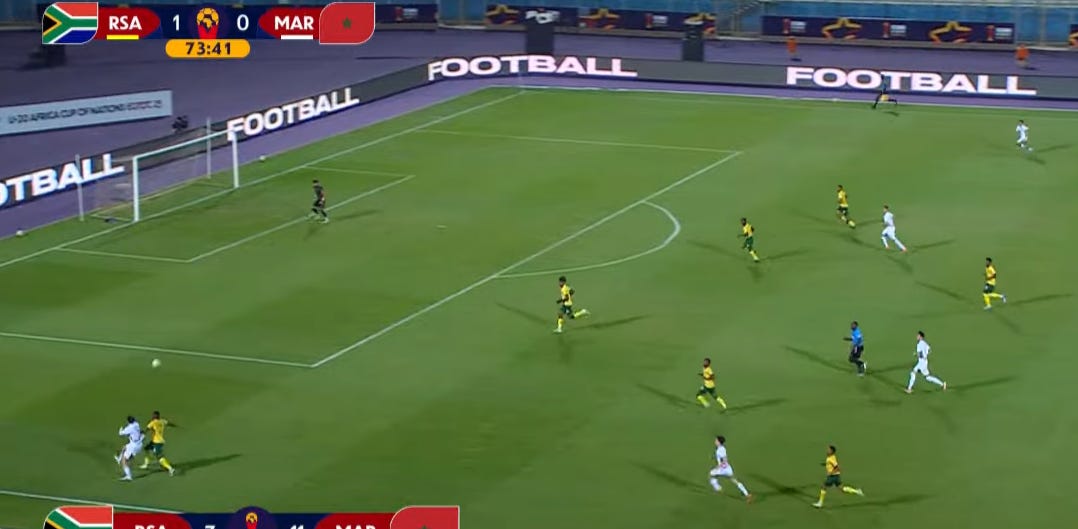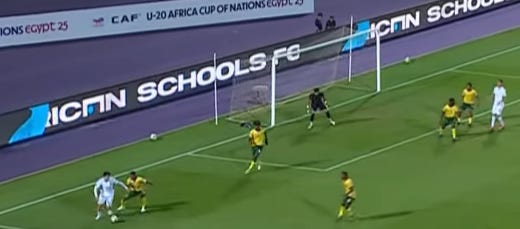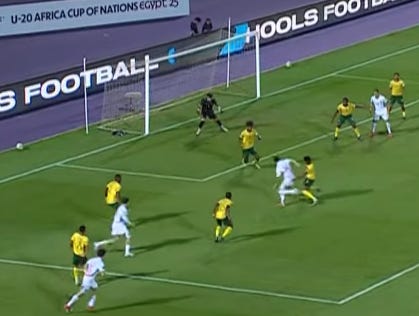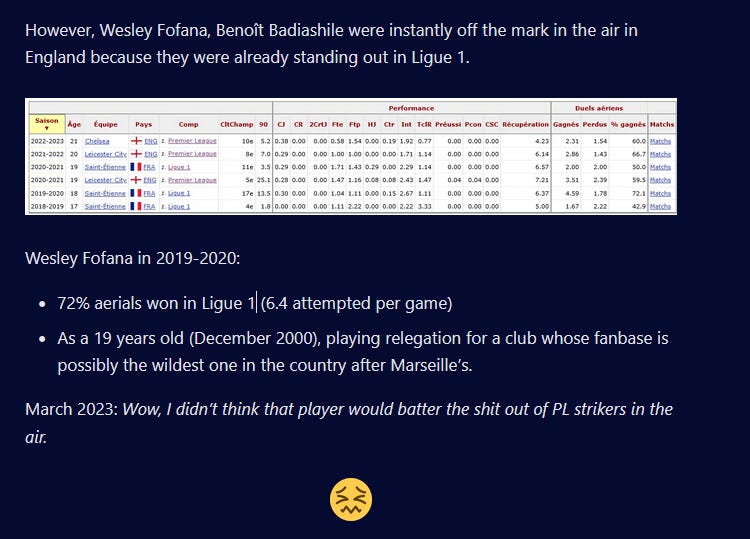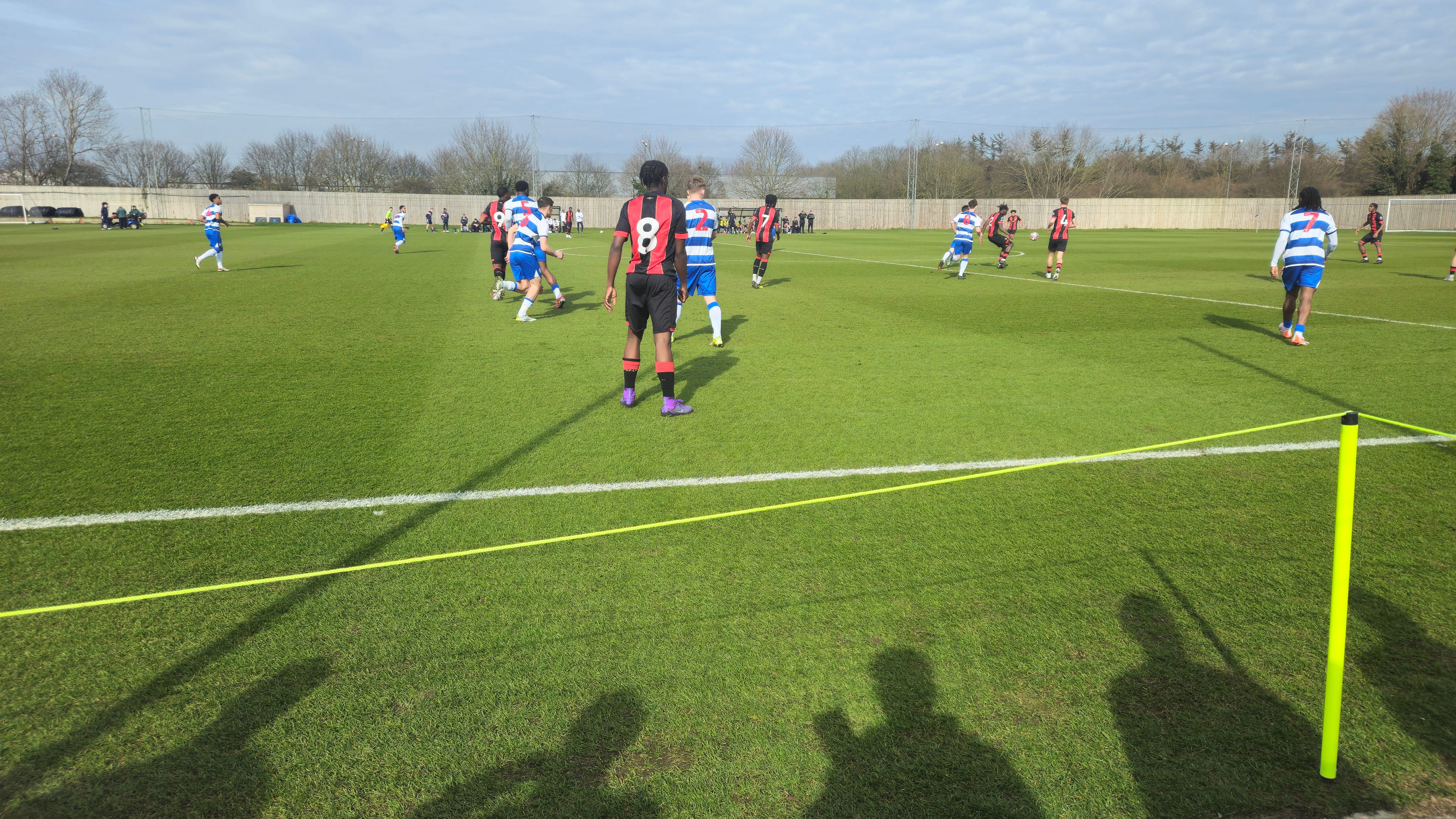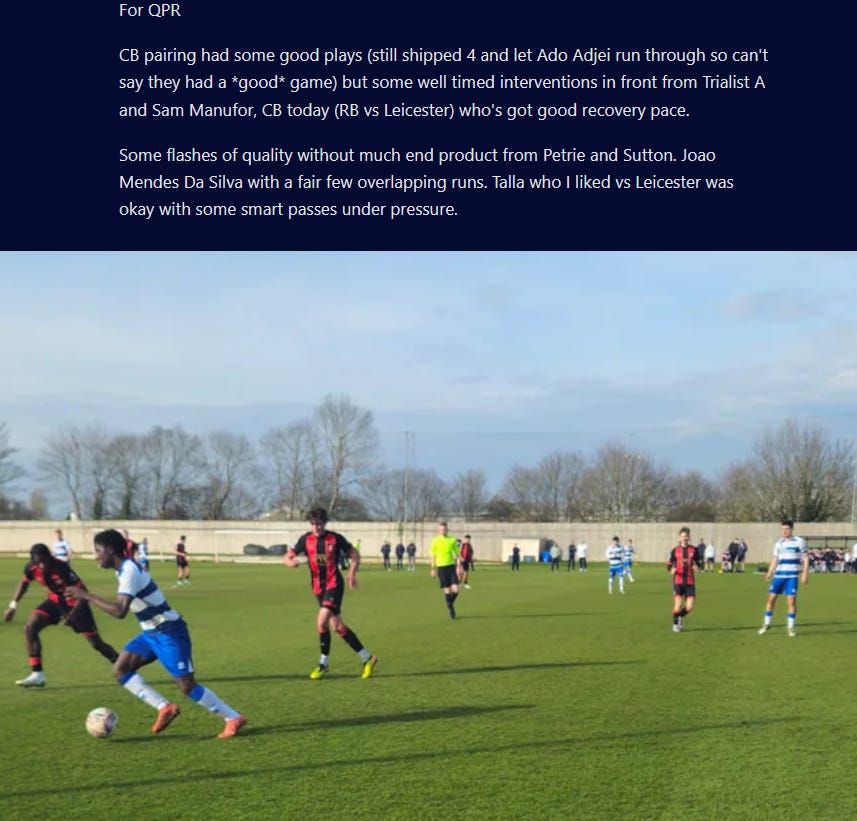Tylon Smith originates from Jamestown, Stellenbosch ; South Africa 🇿🇦
Jamestown Strawberry Festival is a vibrant gathering dedicated to this delicious fruit.
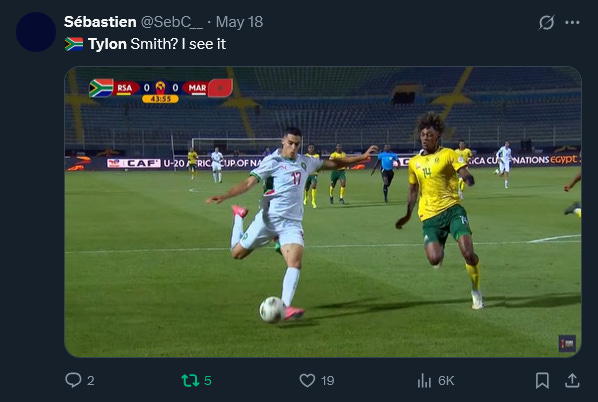
Tylon Smith won the U20 AFCON after taking the centre stage displaying swashbuckling energy based on speed to sweep, long range play, inch perfect blocks and winning duels.
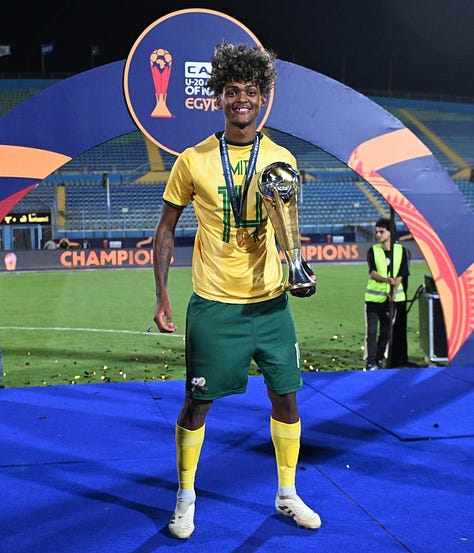
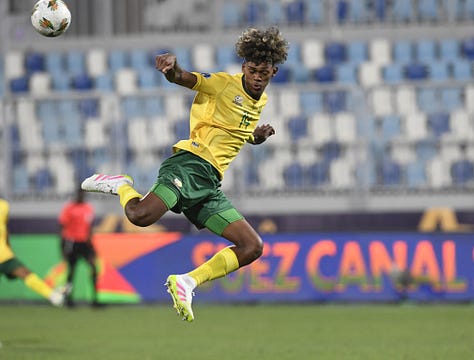
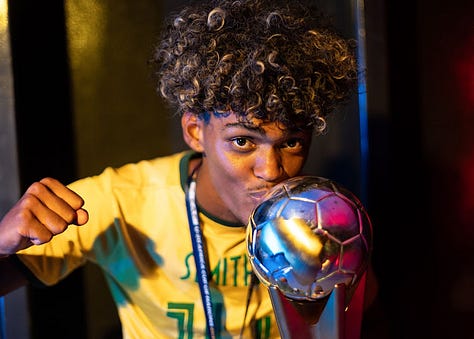
A gait so peculiar that he would have stood out regardless, and stand out he did as he was voted Man of the Competition - not a meagre achievement as a defender.
Which is unusual for these tournaments who usually celebrate the most high profile attacker.
On the other hand, the Amajita (🇿🇦South Africa U20) only conceded 3 goals (in the group stage), and none in the Knock-Out rounds.
I asked Copilot for the list of the Player of the Tournament at every U20 AFCON
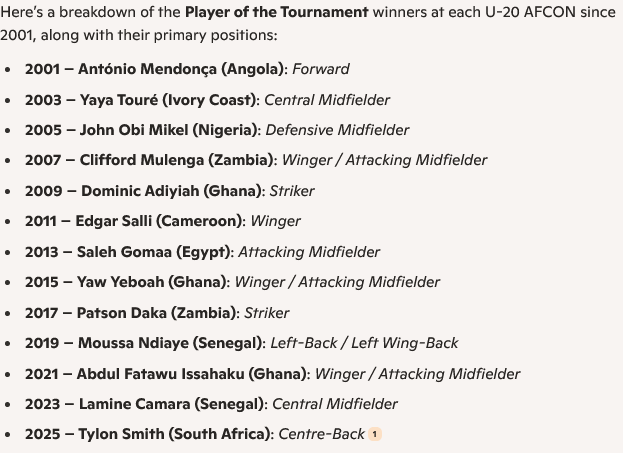
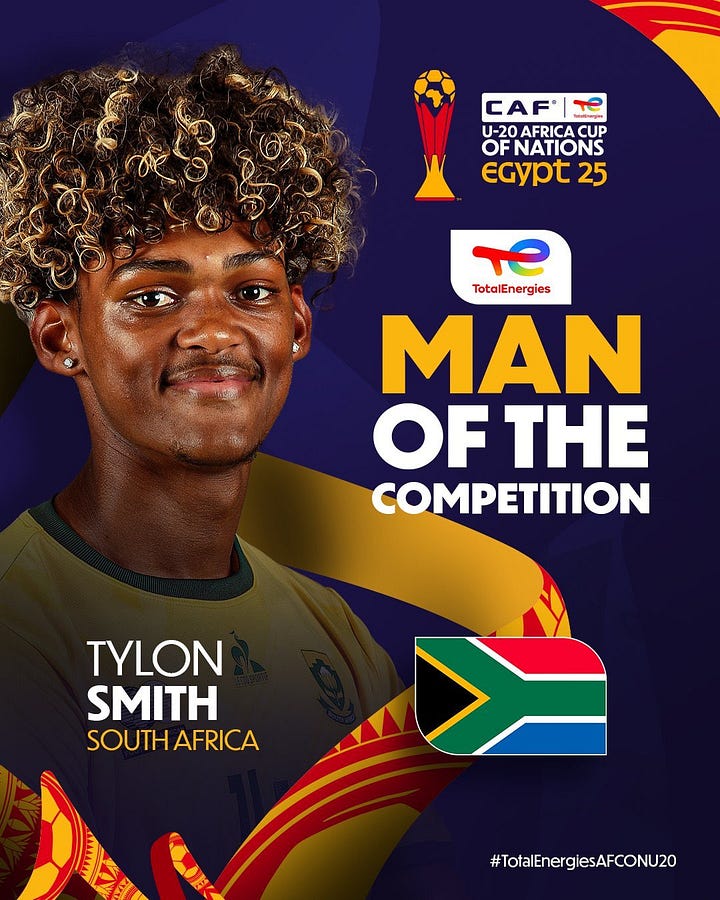
To continue the player specific framework, a discussion around space coverage and sweeping in behind. But also sprinting (bio)mechanics.
Some of the points are reminiscent of the ones raised in the Khusanov newsletter, the general theme revolving about talent identification - for sure, neither played under a rock as they effectively won the AFC U20 Cup 2023 and AFCON U20 2025.
But the idea is always centred around how do you spot gems
Goalposts don’t move, nor does the array of situations to deal with
Tyler Smith, TS plays for Stellenbosch FC ; on the hills above Cape Town, 🇿🇦
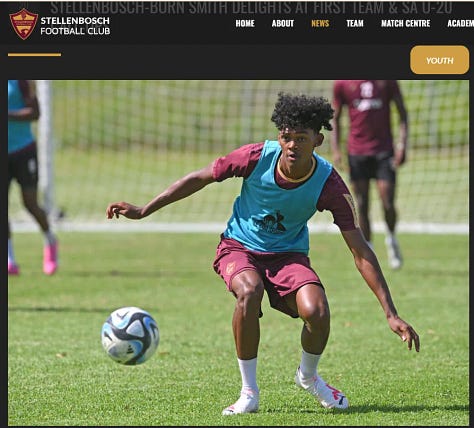
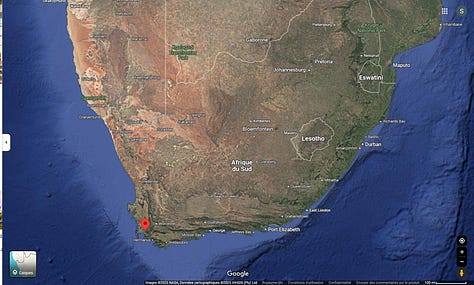

Ball not covered
Defenders have to identify two situations :
Ball covered = means someone is closing down the carrier, therefore defenders can step up or hold the line (like Toto)
Ball not covered = get side on, and start running backwards before the long ball is played, therefore on cue when the carrier is swinging his arm
This is what TS does, see how the other defenders are flat footed ; centre of balance projecting behind their feet (quick movement and they’re on the floor)
One foot in front, one foot behind ; ball side, goal side.
Tylon Smith’s torso leans forward, he’s starting his sprint.
Arms for balance
With the relevant counter balance :
Right leg - left arm
and so on : left leg, right arm. With the left arm here used to keep balance.
Knee bent to load power on the planted foot
Keeping eyes on the ball
In line with the post / protect the goal
CB positioning on crosses aims at looking at the ball, seeing runners whilst staying in line with the post - as opposed to ball watching into no man’s land
Block on the 6yd box line or before, ready to move when the ball is hit
Another good scouting cue :
Tyler Smith spins from his support leg to react to the striker about to get a touch, he’s proactive
As opposed to when he gets a touch, in which case he’d be too late and reactive
Blocking stance is good, maintain core strength without using arms for balance (in case it hits a hand), chest leaning forward and getting contact.
The best CBs are able to maintain core strength, bend the support leg’s knee to act as another way to block the shot (between the legs)
Point is to squeeze in as fast as possible : and does he eats up ground
Block on the 6yd box
Block with the left foot on the 6yd box to change direction
Readjusting and leaping from the right foot
Similar to goalkeeper’s spring to take off :
Emergency defending
#6 makes a meal of the pass
Many defenders would panic and jump on the carrier, make a foul.
TS backtracks to delay, to wait for team mates to get back behind the ball
Show opponents wide towards cover and direct team mates to pick runners
Having kept an eye on the striker, in position to intercept the cross or move to the line between a future reception and the goal
Takeaways : damage mitigation is about not damaging what can be saved, sure it’s a scare but it’s still a 2v2+2 that can be tamed easily.
The other worthwile discussion from a session design standpoint is that most of the “wave” practices are attacking overloads : 3v2 / 4v3
These 2v4 counters also happen, and players still have to find solutions : two players and one joining, against numbers. Something to be mindful of.
It’s always a matter of how many players each team has in front / behind the ball
Strawberry Swipe
Tylon Smith is rapid, and reads the game.
The brioche (French one) toasted, and strawberry jam combo. Can’t miss.
TS’s leg on the edge of the frame
Rapid to cut across
Impressive “double acceleration” which usually the moment where defenders are at the end of their life, and wipe out the forward when chasing these channel balls.
TS keeps up, fights hard to get his arm in front whilst the forward resists
To eventually get a touch on the ball. Height also helps for tackling reach.
Step, Step, Step
Leadership skills and holding the line
Backwards carry : push everyone to step up
Headed pass
Heading is a skill, the best defenders in the world ; John Terry, Varane or Steve Cook (quite the eclectic selection just there) can head the ball towards a team mate
To turn a potential 50/50 with the backline as sitting ducks, into a settled possession in middle third
Last man tackles
Some other “scouting illuminations” with Tylon Smith :
In any field of life, it’s difficult to not stack observations into pre-empted boxes.
Football scouting is inherently about fighting cognitive bias, shutting off the noise.
Follow people who know, but also get to understand the thought process of those who don’t.
You’d be half forgiven to see Tylon Smith and throw a wild guess that he’ll look he doesn’t belong - or that he will be the most visible player on the pitch in every flash point.
He’s unlikely to be average. In grassroots football ; he could be.
At this level, there has to be enough screening (and a wide enough talent pool) to have the legitimate belief that he’s worth a toffee.
1v1 defending in these situations is a good truther to tell apart players who will just tangle legs and make clumsy fouls, and the ones who will always toe poke the ball out of danger.
The tackle might be idiosyncratic, but if it happens a few times, then it’s no fluke
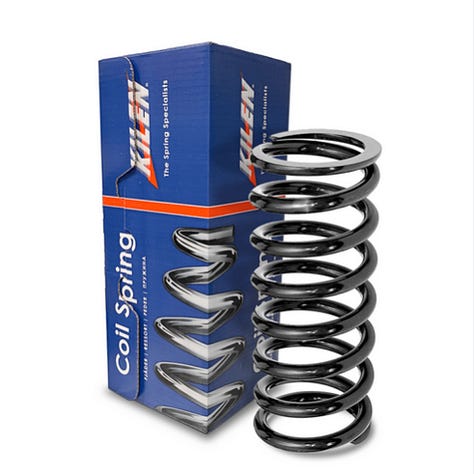

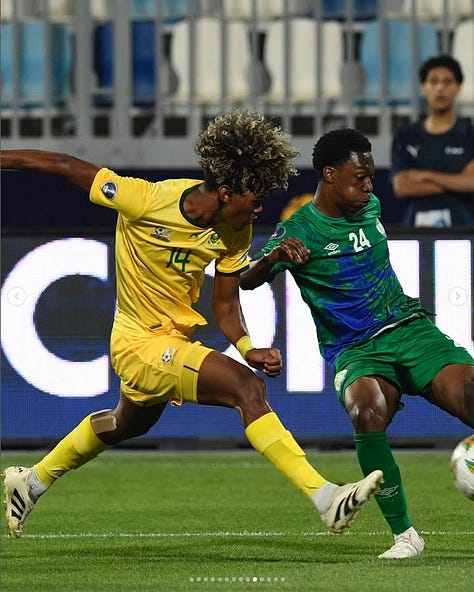
For someone fast on long distances, Tylon Smith is also a coiled spring on lose balls
“That defender is ass” might actually be what you’re looking for
From a movement pattern, we’re talking about the “posterior chain activation”
Ideally : the order of firing is
Glutes (bum)
Hamstrings (three muscles at the back of the thigh)
Back muscles (stiffen the spine, anchor hip extension)
For many footballers going through an incomplete S&C curriculum, or ill-fitting ; there’s an over-reliance on hamstring muscles to do the job that the bum muscles (which are the most powerful) should be doing.
Glutes fire first to extend the hip and move the centre of mass forward
Hamstrings stabilise the hip-knee link.
Calves provive support with plantarflexion
But that has to be an ass job.
Hamstrings decelerate the leg before contact; glutes re-engage to drive again.
Arms punch in opposition to leg drive
Gets first to the ball, and clears it
Meep meep
I watched the full tournament several times (in the background) but this is the play that made me want to look further or write a bit
An excellent low driven pass : clean connection and follow through
and some more reaction time : TS is already on the move when the receiver between the lines gets it
Arms for counter balance ; left arm right leg.
This is one of the situations coined (atom splitting stuff) by Raymond Verheijen in his book.
Verheijen was a high profile S&C coach in the 2000s ; working with Guus Hiddink who had teams playing opponents off the park (South Korea 2002, Russia 2008 etc…)
His influence isn’t to be understated, for me he’s one of the lead experts who contributed to the steep increase of fitness standards all over Europe in the 2000-2010-2020s.
“everyone does tactics” “everyone keeps a tight block”
Well, there’s a S&C / fitness foundation for it. Hiddink, Mourinho (and others) used it when many were still getting their players run in sand or through the woods.
I have used the Football Periodisation model, which is a great way to get a team fit first and foremost. I recommend the book.
I’m now leaning more towards tactical periodisation when you want to get more into the technical / tactical aspects of developping teams / players - but which doesn’t escape the fact that you need intense drills in the two approaches.
Get the point, simple instructions ; can’t take longer to explain than perform.

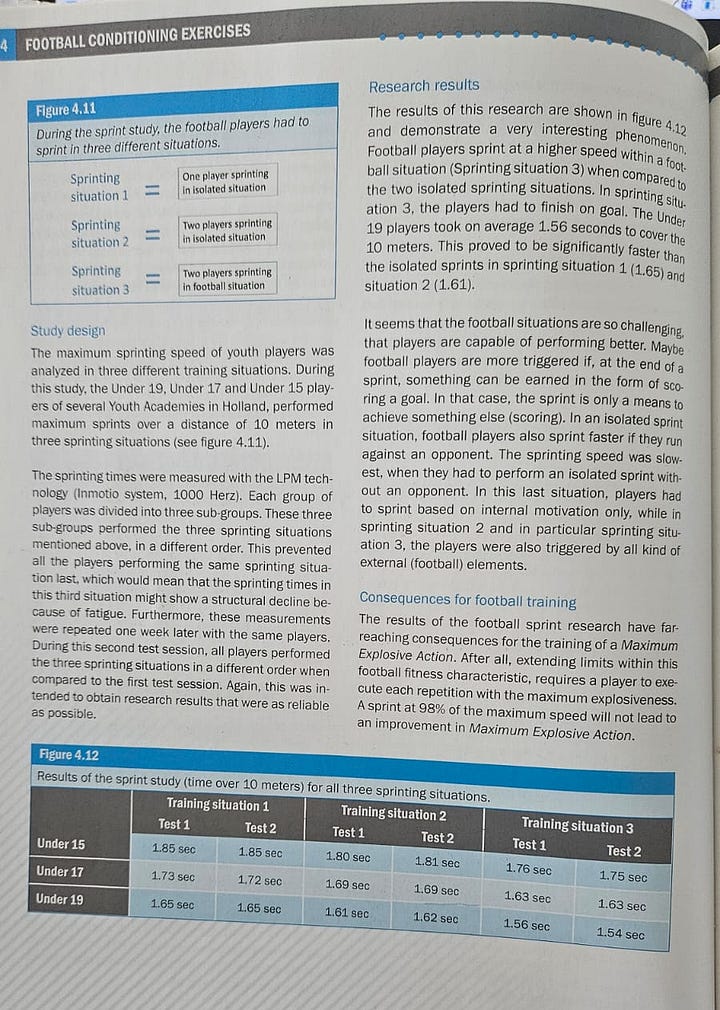
This is the piece of research (I wish you gave the reference though Raymond) led to results which suggest the groundbreaking finding that players try harder in football specific sprinting situations tna isolated ones.
An aspect to be mindful of when designing speed drills.
Run from plastic cone A to plastic cone B won’t ever get 100% of your ability to sprint.
The (in)famous Ekstrand study asked by UEFA noted that between 2001 and 2022, hamstring injuries in elite men’s football doubled from 12% to 24% of all injuries, with training-related incidence rising annually by 6.7% and recurrences occurring in nearly 1 out of every 5 cases.
Ekstrand, J., Waldén, M., Hägglund, M., Arundale, A., & Bauer, P. (2023). Hamstring injury rates have increased during recent seasons and now constitute 24% of all injuries in men’s professional football: The UEFA Elite Club Injury Study from 2001/02 to 2021/22. British Journal of Sports Medicine, 57(5), 292–297.
https://doi.org/10.1136/bjsports-2021-105407
The game, however, will demand 100% speed
Edouard and al, argue that sprinting when properly dosed, individualized, and regularly practiced should be considered acentral component of hamstring injury prevention, not just a risk factor, due to its unique neuromuscular demands that cannot be replicated by traditional strengthening exercises.
Can we sprint in the other direction?
Block to decelerate
And landing with the toes first (or “showing the soles”) whilst glutes-hamstrings-back fire in the same order as sprinting.
So that TS doesn’t miss one second of the action, and ends up goal side to block a potential shot.
Smith also scored the goal to send South Africa into the final
With data available ; Tylon smith won the second most headers at a rate of 2 out of 3
“duels” is always a media friendly big bucket of one size Fitz Hall metric where all sort of events are logged.
From the Badiashile (very) long read, heading usually scales up well across divisions
Now Tylon Smith seems bound to London W12 as QPR is said to be about to complete a move
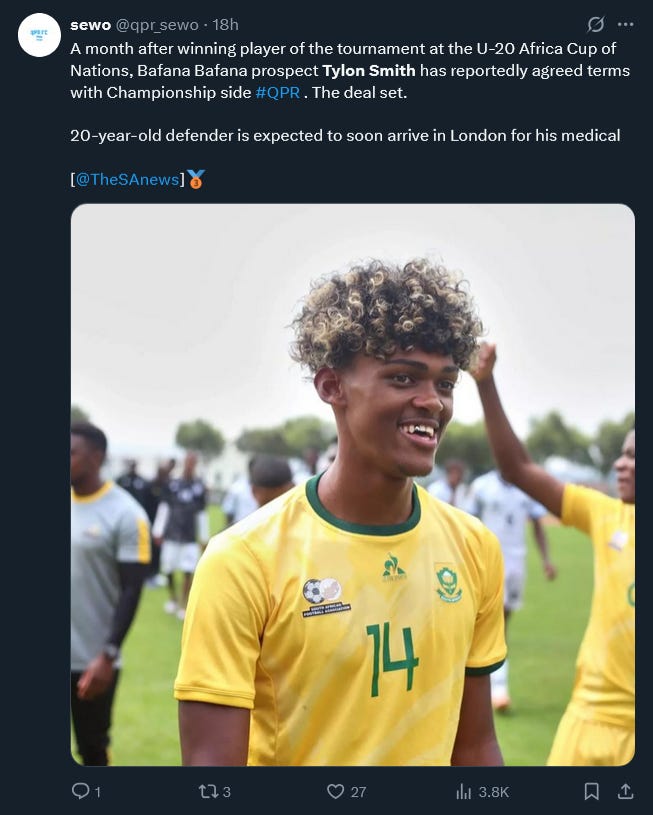
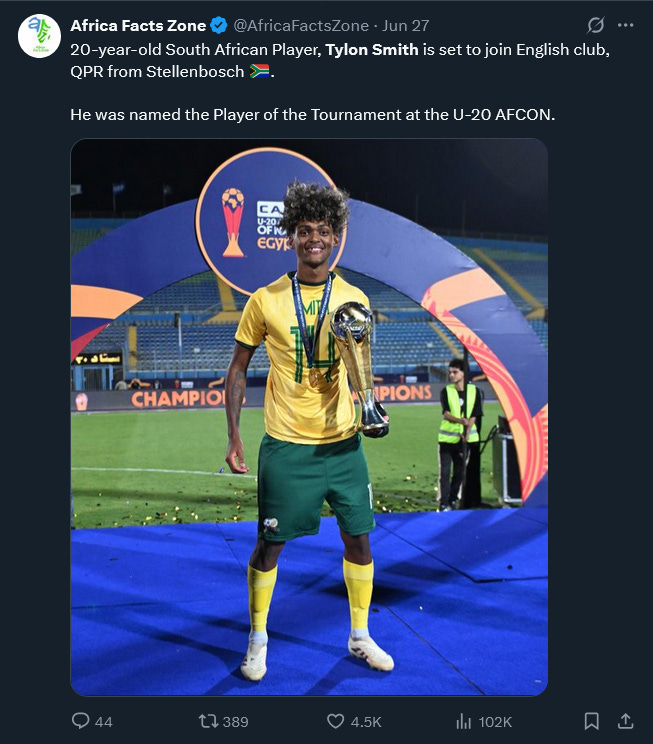
I’ve been to a few QPR games (including QPR Leicester in the PL2 Cup, I haven’t formatted the match report yet)
I’d imagine Tylon Smith to be given a run in PDL first,
He looks better than the best two CBs I’ve seen in PDL this season.
(a)PDL Team Of The Season
This is *a* Professional Development League Team of the Season based on the games I’ve watched live.
He’s got the speed to play senior football, possibly in the middle of a 3 for a start, or maybe as a deep CM / auxiliary CB
For a bit of Juju Stephan Tactico Lore.
Stéphan won the National 2 (4th division) with Rennes’ reserves, and featured Jérémy Gélin who won everything in the air and could also slot into midfield… at a time where he shared the pitch with Ousmane Dembélé
Was worth missing the 2015 League Cup final (Mourinho’s Chelsea vs Poch’s Spurs) to attend a game featuring Ousmane Dembélé in an obscure round of 16 French Youth Cup tie (and Juju Stéphan, then U17 Head Coach shadowing Laurent Huard’s U19s). Jérémy Gélin, in a midfield two with Denis Will Poha that day.
